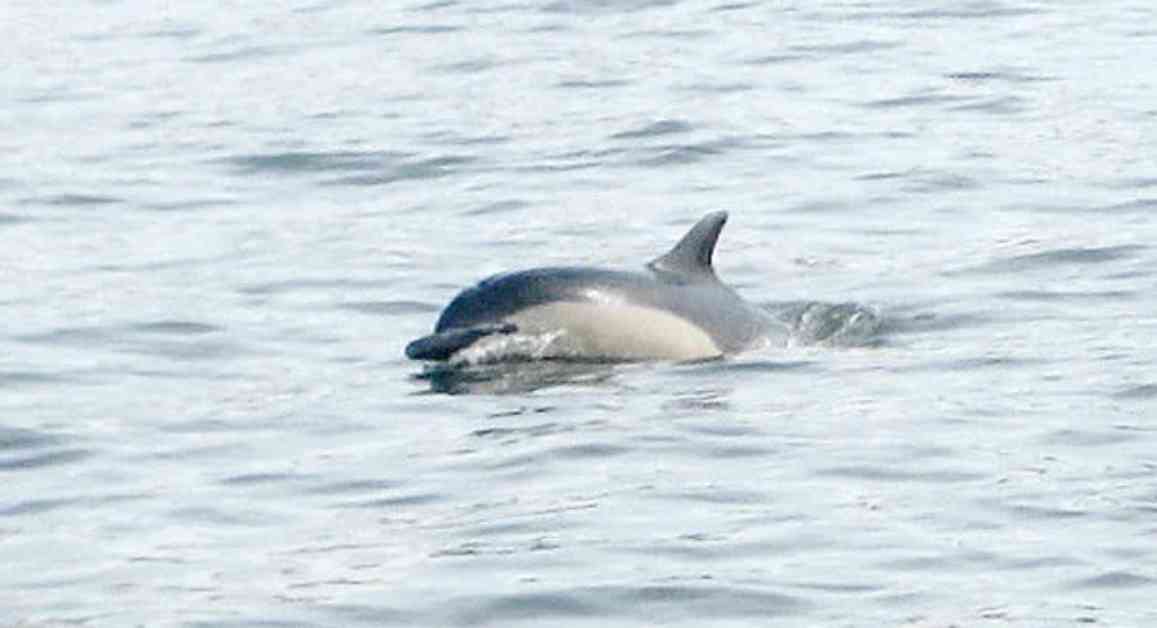A dolphin’s lifeless body was discovered on an Astoria, Queens beach, prompting questions about its mysterious demise. The unexpected appearance of this marine mammal along the East River has raised eyebrows, particularly among experts like Rob DiGiovanni, the chief scientist at the Atlantic Marine Conservation Society. While rare, sightings of dolphins in this area have been reported in recent weeks, adding to the intrigue surrounding this unusual event.
The Atlantic Marine Conservation Society has taken custody of the deceased dolphin, with plans to conduct a thorough necropsy to unravel the circumstances leading to its untimely death. DiGiovanni emphasized the need for caution in drawing premature conclusions, highlighting the complexities involved in determining the exact cause of the dolphin’s demise. Factors such as its age, diet, and overall health will be scrutinized through various samples and tests to shed light on this puzzling incident.
Amidst speculations circulating on social media about the discovery of another dead dolphin, DiGiovanni hinted at a potential connection between the reported sightings. He hinted that the lone retrieved corpse likely corresponds to both alleged incidents, as they occurred in close proximity. While the public’s curiosity is piqued by these events, the need for concrete evidence and scientific analysis remains paramount in unraveling this mystery.
The NYPD was swift in responding to the sighting of the deceased dolphin at Hallet’s Cove Beach along Vernon Boulevard in Astoria, underscoring the importance of promptly addressing such occurrences. The authorities worked diligently to retrieve the dolphin’s body, recognizing the significance of preserving evidence for further investigation. This collaborative effort underscores the community’s commitment to protecting and understanding the diverse marine life that inhabits these urban waters.
Chris St. Lawrence, a member of Gotham Whale, a local organization dedicated to studying marine wildlife, underscored the myriad challenges faced by animals navigating city environments. The delicate balance between urban development and wildlife preservation underscores the need for heightened awareness and conservation efforts. St. Lawrence’s reflections on the intersection of urban landscapes and natural habitats offer a poignant reminder of the shared responsibility in safeguarding these precious ecosystems.
As news of the dead dolphin in Astoria continues to unfold, the public’s interest in the city’s wildlife remains palpable. The juxtaposition of bustling urban centers with the presence of marine creatures like dolphins and whales evokes a sense of wonder and curiosity among residents. This evolving narrative serves as a poignant reminder of the fragile coexistence between human activities and the natural world, urging us to reflect on our role in preserving these invaluable ecosystems.
In conclusion, the discovery of a deceased dolphin in Astoria, Queens, serves as a poignant reminder of the intricate relationship between urban environments and wildlife. Through collaborative efforts and scientific inquiry, experts strive to unravel the mysteries surrounding this event, shedding light on the challenges faced by marine creatures in city settings. As the investigation unfolds, the public’s fascination with these encounters underscores the enduring allure of nature’s presence amidst the urban landscape.












